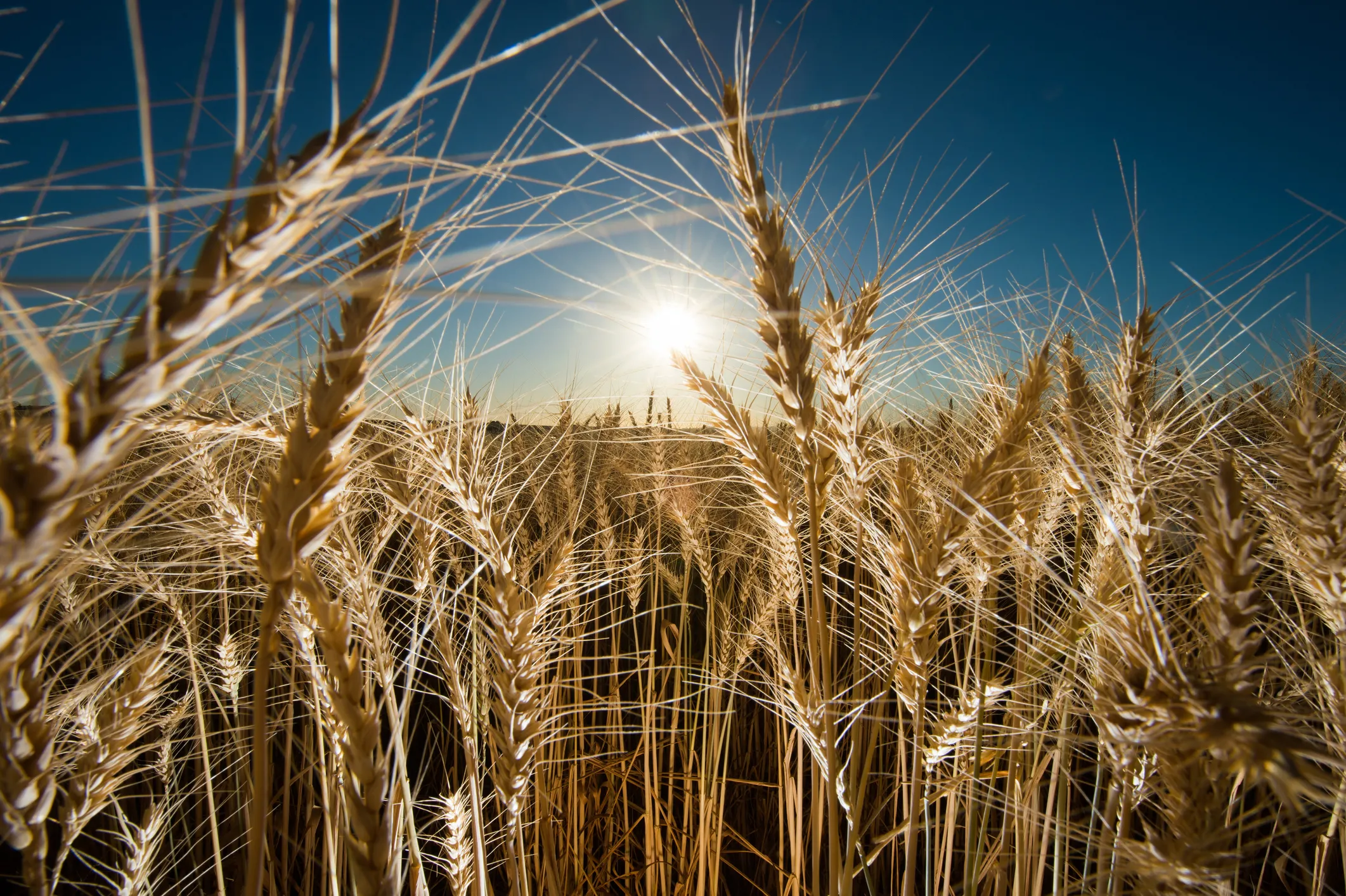
Australia faces extreme climate events with recurring droughts, heat stress, floods, and temperature variability that present an enormous challenge for the agricultural food production system. Historical records indicate droughts as a critical issue for agriculture since the late 1700s. Droughts continue to affect agriculture through crop and stock losses, reduction in water supply availability, severe bushfires, dust storms and soil loss, and environmental degradation. Climate-related impacts are also found to disrupt agriculture input supply chains, especially those concerning with types and amounts of fertiliser, herbicide, insecticide, fungicide, seeds, machinery, and other inputs. The resulting farm-level output changes brought about by these input alterations have affected distribution and storage, manufacturing options, other agricultural industries in Australia through various feedbacks. Realising the potential for changes in drought characteristics due to global warming, institutional responses around drought management in agriculture have come to place a great deal of focus on building resilience and adaptative capacity of the farmers in proactively managing risks associated with climate change. With the formulation of a National Drought Policy in 1992, mitigation of climate effects has been placed directly on farming community through active management. Subsequently, the new drought policy of 2013 proposed a national approach to training of farm businesses along with a coordinated and collaborative provision of social support services and tools and technologies to facilitate informed farmer decision-making in a varying climate. Consequently, while there is a consistent focus on increasing productivity through science-based farming with minimal government subsidies (just over 2 percent) , the competitiveness of agribusiness is harnessed through continuous innovation in farm machinery, sophisticated plant and animal breeding programmes, and intelligent transport solutions. Locally-developed production methods and technologies and international research and development collaborations are key to the growth of agribusiness in Australia.
Improvements in agricultural productivity have been fundamental to building resilience of agricultural farmers against adverse climatic conditions. These improvements have been brought about by structural adjustment, change, farm-level climate risk management innovations, investment in human capital, research, development and extension (RD&E), and most importantly, extensive investment in water by the Australian government to ensure its availability and efficient utilisation. These efforts have allowed Australia in maintaining its competitiveness in world markets and in providing financially sustainable opportunities for farm households.
Australia has a diverse agricultural, fisheries, and forestry sector that provides a range of crops and livestock products. Major amongst them being, beef, sheep, wheat, dairy, horticulture, and livestock products. The gross value of production in the sector increased from nearly US $62 billion in 2000–01 to US $67 billion in 2019–20. Agriculture accounts for 55 percent of land use in Australia (around 427 million hectare) and uses nearly 25 percent of water extracted (3,113 gigalitres as in 2018–19). Based on a three-year average, from 2015-16 to 2017-18, Australia exported around 70 percent of the total value of production. Raw products and minimally transformed, mainly meat, account for a major share of Australia’s exports between 1988 and 2018. The 2019–20 figure for the gross value of farm production in Australia was around US $61 billion while agricultural exports were valued at US $48 billion. In terms of sectors driving exports in Australia, it is the wheat and beef that are more export-oriented than dairy, horticulture and pork.
Improvements in agricultural productivity have been fundamental to building resilience of agricultural farmers against adverse climatic conditions. These efforts have allowed Australia in maintaining its competitiveness in world markets and in providing financially sustainable opportunities for farm households.
But this is not all, agriculture in Australia has backward and forward linkages with various industries in global value chains. Australia’s agricultural producers depend on global supply chains and imported inputs to produce goods that can compete globally. For instance, relying on backward linkages to obtain specialised inputs from New Zealand and other countries, the Australian dairy exports are now competing in international markets. Having been integrated in global food value chains, Australian agriculture industry has benefited through export competitiveness and is also contributing significantly to employment growth in the country. The entire Australian agriculture supply chain employs 1.6 million people. The gains from integrating in global value chains have been enormous for Australia despite the climate extremes impacting productivity and profitability of Australian farmers.
Australia’s climate has warmed on average by 1.4°C since 1910 and more so since 1950. Rainfall in winter season has declined by 20 percent since 1970 in south-western Australia and by 12 percent since 2000 in south-eastern Australia. The resulting losses in crop yield are significant for cropping farms in western Australia. As a response to these challenges, the agriculture and food production sector has undergone structural changes to improve productivity of the sector. Structural adjustment accounts for around half of productivity growth in the sector. This includes farm consolidation resulting in lesser number of farms, almost halve, with increased farm size over the last 60 years. The increased average farm size has helped in the diffusion of improved management practices along with providing increased economies of scale, and rising farm incomes. Consequently, the 2018 National Drought Agreement has shifted the focus of the drought policy away from seeking to protect and insulate farmers, towards drought preparedness and self‑reliance. There is a strong emphasis on promoting the use of strategies by farmers to mitigate the effects of climate change. Amongst others, farmers are going for no-till agriculture which reduces soil erosion and retains crop stubble, resulting in an increase in the input of carbon to the soil. This also helps in capturing carbon and reducing greenhouse gas emissions; improved soil structure and fertility; and greater water use efficiency with reduced input costs.
With Australia having a long and evolving history of managing climate variability in agriculture, Australia’s expertise can be used to enhance the resilience of Indian agriculture to climate vulnerability through strategic research and technology transfer.
As one of the most food-secure countries in the world, with sufficient availability of safe, healthy food, despite biosecurity threats associated with extreme climatic events, Australia is a strong supporter of global agriculture and food security. Australia meets its own demand for food by producing over 90 percent of it domestically while its exports contribute to food security in many countries across the globe. The Australian Government continues to invest in Global Agriculture and Food Security Programme (GAFSP) in order to assist low-income countries to implement national strategies to raise agricultural productivity, link farmers to markets, improve non-farm rural livelihoods, and reduce risk and vulnerability. Australia leads several agricultural initiatives across its bilateral, regional and global programmes. Its highly-valued technical and managerial capabilities in agricultural research have helped improve agricultural productivity in developing countries.
India-Australia Grain Partnership
The India-Australia Grains Partnership is an opportunity for India to use Australia’s expertise in post-harvest management to strengthen rural grain storage and supply chains so as to reduce losses and wastage. The collaboration in agriculture between India-Australia is a part of the Comprehensive Strategic Partnership announced by both nations in in their virtual summit in June 2020. With markets, supply chains and trade relationships are becoming complex, globally, the recent Supply Chain Resilience Initiative (SCRI) launched by Japan, Australia, and India in 2021 is a joint effort to address supply chain vulnerabilities in the Indo-Pacific region that have been exposed by unprecedented risks following COVID-19 and the increasing threats of food insecurity. The key features of the initiative are to develop dependable sources of supply; enhance utilisation of digital technology; support trade and investment diversification; and strengthen mutually complementary relationship amongst the participants. Australia is viewed as a trading partner that can help India in developing its agricultural supply chains, and as for Australia, it can explore export opportunities in India where access to safe, nutritious, and healthy food has become even more important in the present pandemic world. Climate change is another area where India must engage with Australia in addressing climate-related challenges that are faced by Indian agriculture. With Australia having a long and evolving history of managing climate variability in agriculture, Australia’s expertise can be used to enhance the resilience of Indian agriculture to climate vulnerability through strategic research and technology transfer.
The views expressed above belong to the author(s). ORF research and analyses now available on Telegram! Click here to access our curated content — blogs, longforms and interviews.




 PREV
PREV


